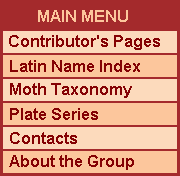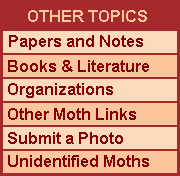In addition to global wars on terror and global warming the world is also involved in a little known war against exotic and invasive species of plants, animals, pathogens and diseases. Most North Americans have probably heard of the Gypsy Moth, but far fewer know about the problems with Paperbark Trees or Pythons in Everglades National Park. These are but a few of the hundreds of introduced species that threaten the ecology and biodiversity of North America. The problem is magnified manyfold throughout the world. Our natural and agricultural landscapes are at risk.
Eric LaGasa serves as the Chief Entomologist in the Pest Program / Plant Protection Division of the Washington State Department of Agriculture based in Olympia. His work with microlepidoptera has been focused on exotic pest detection since 1994. Exotic microlepidoptera surveys in Washington State have included rearing, light-trap, and pheromone-trap projects, with survey funding, diagnostic services and training, and other material support provided by USDA APHIS through the CAPS Program. Economic Tortricidae has been the group he has worked with most, although other exotic and economic microlepidoptera in many families are also of interest. His educational activities are not the least of his endeavors, for the first grade students in the photo at left are getting from Eric their first inkling of the biological crisis facing their generation. It is they who must ultimately fight the battle to defend the natural ecosystems, biological diversity and agricultural health of our planet.
On the day that I write this, one of the featured news items on the USDA APHIS web site is the announcement of the confirmation of a new invasive species in California, the Light Brown Apple Moth, Epiphys postvittana. USDA Risk Assessment for this species [.pdf file]. ~ Bob Patterson
As part of his public outreach program, Eric & WSDA have established web sites that include; Pacific Northwest (PNW) Defoliators with information especially suitable for teachers, and Exotic Pest Surveys which is loaded with fact sheets dealing with introduce pest species of concern in the region. The PNW Defoliators pages have galleries of images for identifying the native and exotic moths in the area, including defoliation feeding, adult moths, larvae, and even (Eric's favorites) moth faces.





